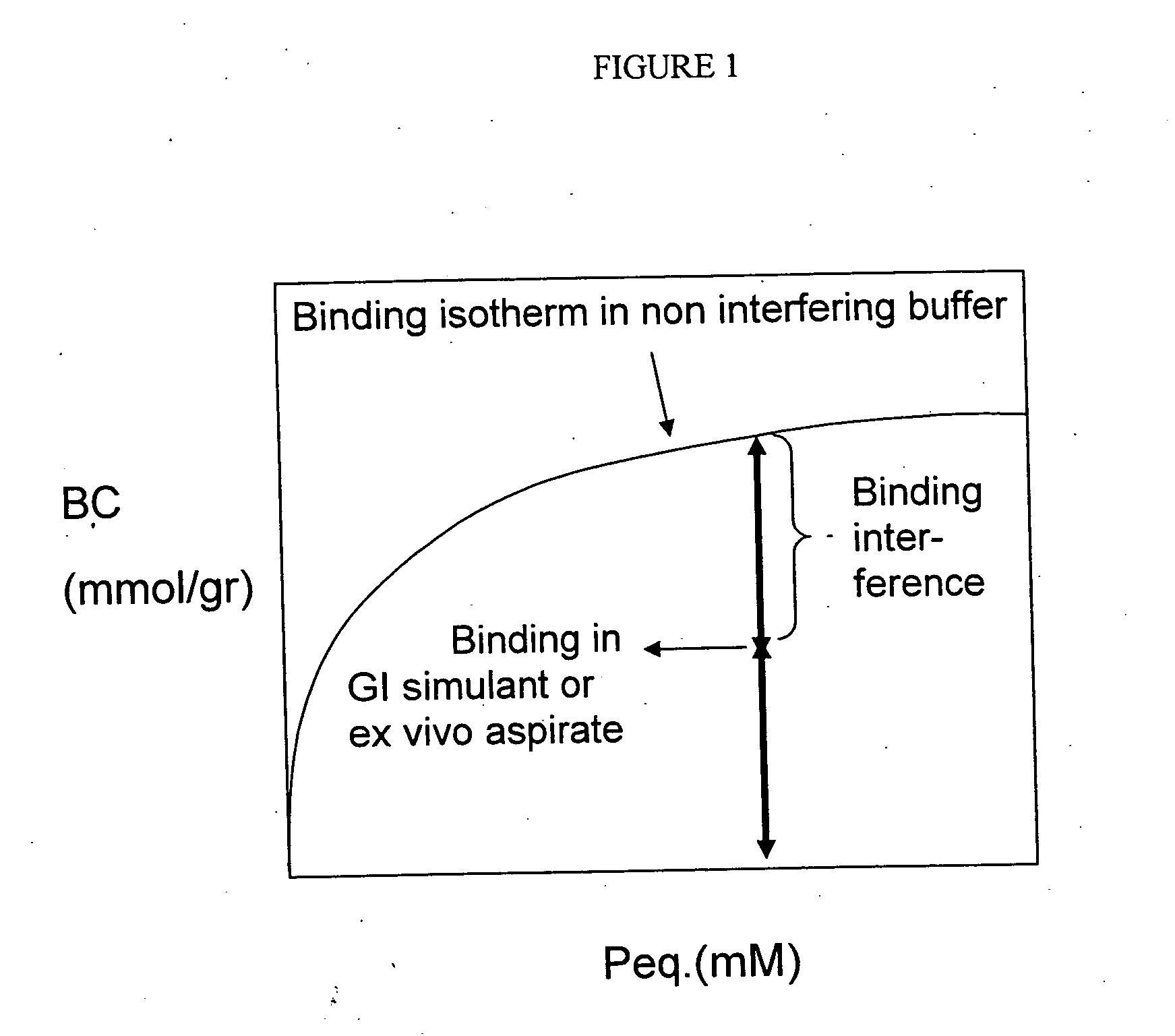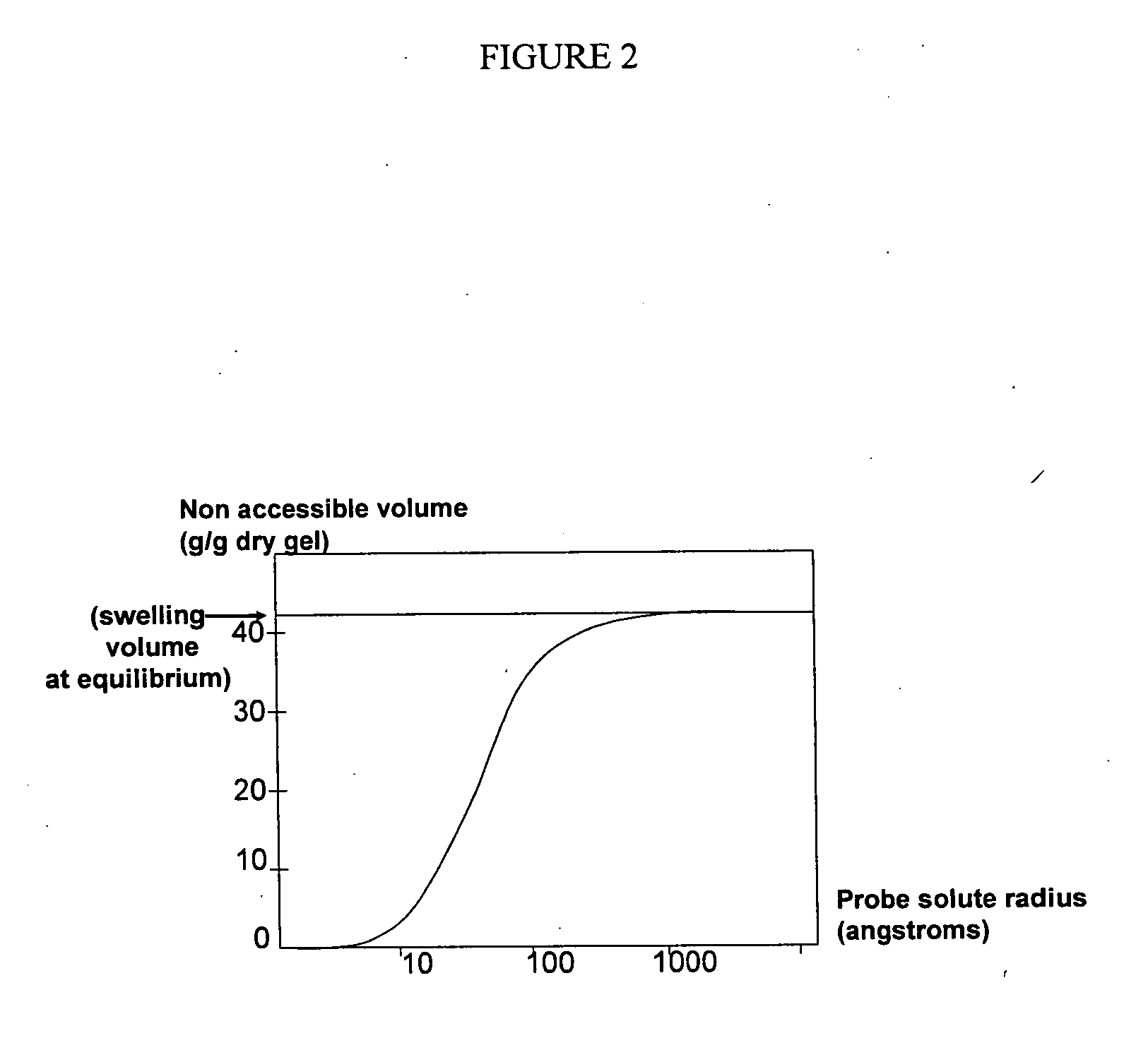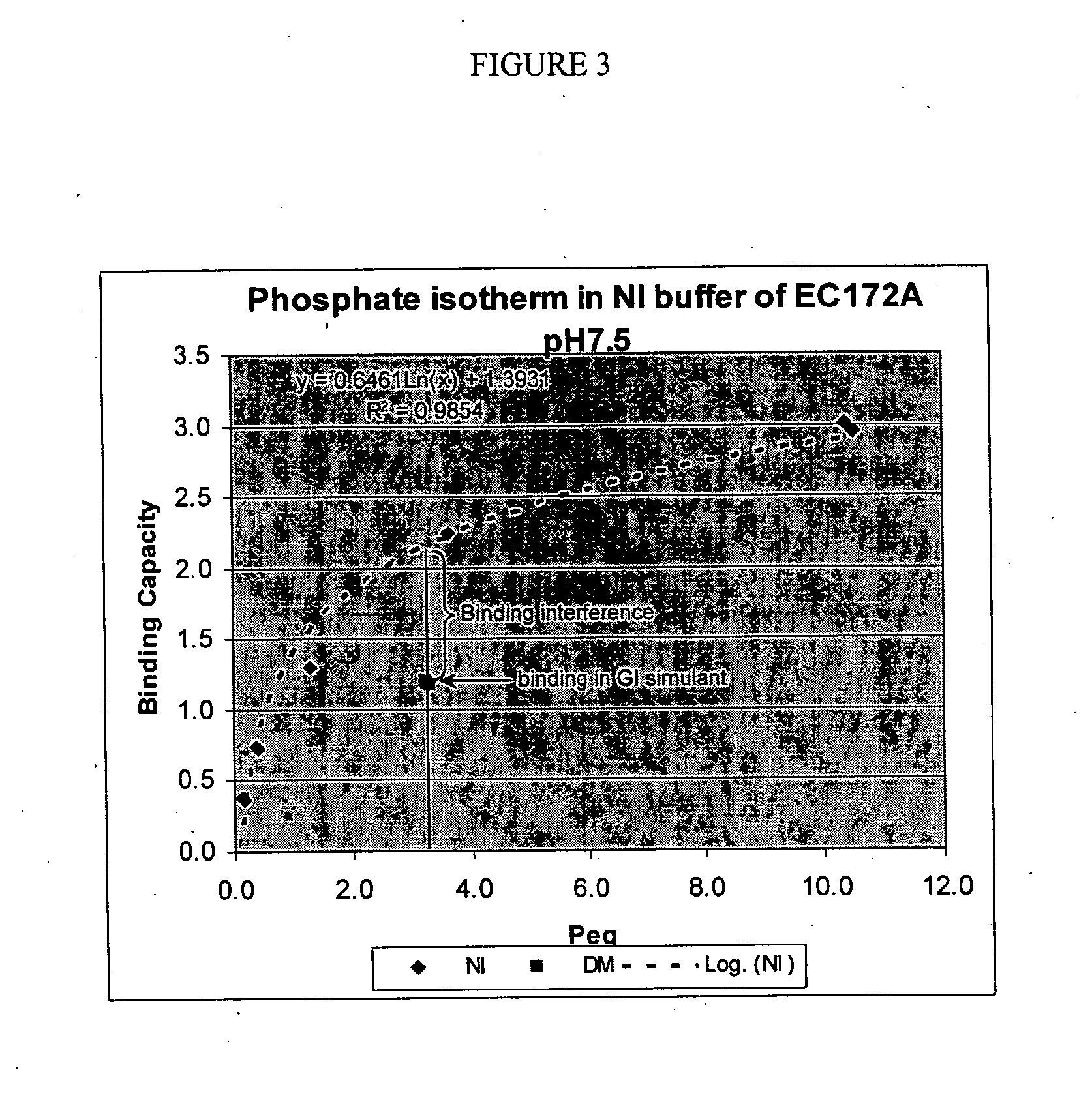Anion-binding polymers and uses thereof
a technology of anion-binding polymers and polymers, which is applied in the field of anion-binding polymers, can solve the problems of high calcium x phosphate product, low binding capacity, and high serum phosphate concentration, and achieve the effects of improving therapeutic properties and/or suitability, evaluating swellability, and porosity
- Summary
- Abstract
- Description
- Claims
- Application Information
AI Technical Summary
Benefits of technology
Problems solved by technology
Method used
Image
Examples
example 1
Phosphate Binding Measurement Protocols
[0235] In this Example various protocols for measuring the capacity of a polymer for binding of an anion (in this case, phosphate) are described.
[0236] Phosphate binding capacity measurements in a non interfering buffer
[0237] An aliquot of dried polymer of weight P(gr), was mixed under gentle agitation with a fixed volume, V(L), of the following buffer: 20 mM H3PO4, 80 mM NaCl, 100 mM MES sodium salt (morpholinoethanesulfonic acid) and a pH of 6.5. When single binding measurements were made, the latter buffer was used. When multiple measurements were made, e.g., for the plotting of a binding isotherm, the phosphate concentration of the buffer was varied. The starting phosphate ion concentration is referred to as Pstart(mM). The solution can be referred to as a non-interfering buffer as it contains no other competing solutes that compete with the phosphate ions for binding to the polymer resin. After resin equilibration, the solution was deca...
example 2
Libraries of Crosslinked Polymers Formed in a Bulk Solution Process and Measurement for Phosphate Binding Capacity
[0248] Creation of Polymer Libraries
[0249] The following five examples each comprise a library comprising up to 24 crosslinked polymers. Polymers were prepared in batch reactors arranged in a 4×6 array format. Each reactor had either a 350 microliters or a 3 ml volume, was magnetically stirred, and temperature-controlled. In a typical procedure, amine, crosslinkers, solvents and optionally base were dispensed robotically in each reactor, optionally under agitation. The reactors were then sealed and heated up to the indicated temperature for 15 hours. The reactor array was then dismounted and plugs of crosslinked polymers transferred in glass vials, ground, washed repeatedly with de-ionized water, and lyophilized. The five libraries are identified below in Table 3 along with the corresponding reaction conditions used in their creation.
TABLE 3LibraryReactor volumeExamp...
example 3
Synthesis of 1,3-Diaminopropane / epichlorohydrin Crosslinked Beads Formed in a Suspension Process
[0258] A 3-liter reaction vessel was used, comprising a three necked round bottom flask with four side baffles. The reaction flask was equipped with an oil heating bath, cold-water reflux condenser, and mechanical stirrer with a 3 inch propeller. To this reaction vessel was introduced a solution of 1,3-diaminopropane (90.2 g, 1.21 mole) dissolved in 90.2 g of water, surfactant (branched dodecylbenzene sulfonic acid sodium salt, 6.4. g dissolved in 100 g of water) and 1 Kg of toluene. This initial charge was agitated to 600 rpm for 2 minutes and then lowered to 300 rpm for 10 minutes before the epichlorohydrin was added. The 300 rpm speed was maintained through out the remainder of the experiment. The solution was heated to 80° C. and also maintained at this temperature through out the experiment.
[0259] In a separate vessel, a 40 mass % solution of epichlorohydrin in toluene was prepared...
PUM
| Property | Measurement | Unit |
|---|---|---|
| Fraction | aaaaa | aaaaa |
| Fraction | aaaaa | aaaaa |
| Fraction | aaaaa | aaaaa |
Abstract
Description
Claims
Application Information
 Login to View More
Login to View More - R&D
- Intellectual Property
- Life Sciences
- Materials
- Tech Scout
- Unparalleled Data Quality
- Higher Quality Content
- 60% Fewer Hallucinations
Browse by: Latest US Patents, China's latest patents, Technical Efficacy Thesaurus, Application Domain, Technology Topic, Popular Technical Reports.
© 2025 PatSnap. All rights reserved.Legal|Privacy policy|Modern Slavery Act Transparency Statement|Sitemap|About US| Contact US: help@patsnap.com



